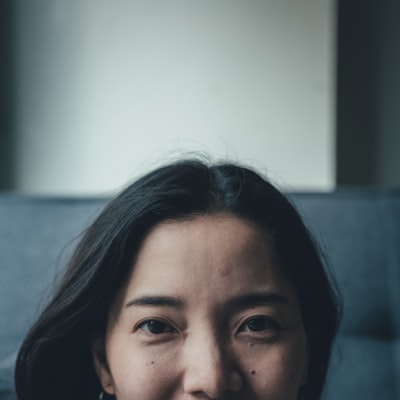Structural Integration and Somatic Education

Structural Integration refers to a method of bodywork which involves manipulating connective tissues. Rolfing is an advanced form of the practice, is used as an adjunct to outpatient rehabilitation for chronic low back pain. 출장마사지 Additionally, it is a process-based approach to somatic education.
Rolfing Structural Integration is an advanced bodywork technique.
Rolfing structural integration is a kind of bodywork that concentrates on the connective tissue surrounding the bones, muscles organs, nerves, and other parts of the body. A Rolfer applies gentle pressure to the connective tissue in order to lengthen them and support the structures around them. The process is a potent way to realign your body and improve balance.
Rolfing structural Integration is a type of bodywork that improves alignment, posture and function as well as flexibility. It is commonly used by dancers and professional athletes to increase their flexibility and performance. It can also be employed to aid athletes and dancers recover from injuries or discomfort.
The benefits of rolfing in structural work have been shown to increase comfort and relaxation. It helps the body adapt to life's demands. It's also a potent preventative measure in case of injuries. The aim of Rolfing is to restore the person's natural flexibility and balance.
Rolfing isn't suitable for everyone but it is often recommended to those suffering from chronic pain. It also helps prevent injuries that are repetitive and boost energy levels. In addition, it strengthens the connection between the mind and body and helps the body to heal itself. Those with serious health issues should consult a medical practitioner before taking this treatment.
The purpose of Rolfing structural integration is to bring the body into a synchronized whole, in which the hips, legs, and shoulders are aligned with the ribcage. The body is balanced and allows the spine to breathe freely. The joints are also connected to the tissues. The process involves a standard sequence of sessions referred to as the Ten Series, each focused on a different part of the body. The entire system is continuously being examined and re-aligned.
The fourth session of the Rolfing structural integrated treatment demonstrates a change of intention. The fourth session is focused on the active center of the body that is close to the midline and spine. This allows the trunk to stretch beyond the pelvic structure and legs to be more flexible. This helps the body move naturally, leading to improved posture, improved energy and a positive outlook.
It is a method based approach to somatic learning.
Somatic education focuses on making the unconscious conscious. Somatic methods utilize the neuroplasticity of our brains to teach students to feel their body and to experience movement in a different manner. This approach is used in psychology, bodywork, and dance, among other fields. The somatic approach could fall into several categories, including somatic education, somatic therapy, and dance therapy.
Finding the best approach for you is the first step. You can search on the internet to locate a practitioner or search for classes in your area. Some somatic disciplines even offer online lessons and courses. These practices might require some research based on your schedule and interests.
It involves manipulating connective tissue
Structural Integration is a kind of massage therapy that involves manipulating connective tissue. By using feet and hands to move the connective tissues this method assists in creating an optimal alignment of the body. This technique can only be performed by those who have completed 'certified training. The goal is to help people move better and more effectively.
The method was devised by biochemist Dr. Ida Rolf, who blends techniques from yoga, osteopathy, and homeopathy. She believes in treating the entire body not just a collection of parts. The range of issues that can arise from pain and limitations in movement can be caused by connective tissue that is not in alignment. Dr. Rolf created a special therapy known as Structural Integration to address these problems. It uses deep strokes and pressure to relieve restrictions.
Structural Integration can also involve manual manipulation of soft tissues which includes muscles, tendons, ligaments and fascia. The work is done on connective tissue of the body to rebalance and lengthen the body. Through this work, people may feel relief from chronic pain, improve posture, and increase the ability to move with ease.

This therapy is based upon the principles of myofascial relaxation which is the manipulation of connective tissues to create an active body. In addition, to using myofascial release, structural integration also uses movement education. Patients feel happier and have higher quality of life due to the fact that they can bring back balance to their entire body.
A typical session is comprised of 10 to 13 sessions. In this time, the practitioner will address your goals and concerns. Each session works on the body in segments and layers, as a deep massage does. Practitioners utilize advanced knowledge of anatomy, physiology and kinesiology in order to correct the body. During these sessions patients are encouraged actively participate in the process. Sessions typically last approximately 60 minutes.
It is an adjunct to outpatient rehabilitation for chronic nonspecific low back pain
Structural integration is a therapeutic technique that is used to manage chronic low back pain. This method can be utilized in conjunction with traditional physical treatments, such as exercises to increase flexibility and range of motion. This approach was studied at Spaulding Rehabilitation Hospital and Harvard Medical School. It is funded by the National Center for Complementary and Integrative Health and the Ida P. Rolf Research Foundation.
The results of the study proved that SI was an extremely effective supplement to outpatient rehabilitation for patients with chronic low back pain that is not specific to the area. The treatment consisted of a series of 20-week sessions. The results varied based on the medical history of the client.
This study is designed to collect preliminary data to support larger trials of Structural Integration. The second purpose of the study was to collect information on the therapeutic effects of this alternative manual treatment for chronic, nonspecific lower back pain. The program also measures changes in walking, balance and coordination, as well as changes to the stress response of low back muscles.
